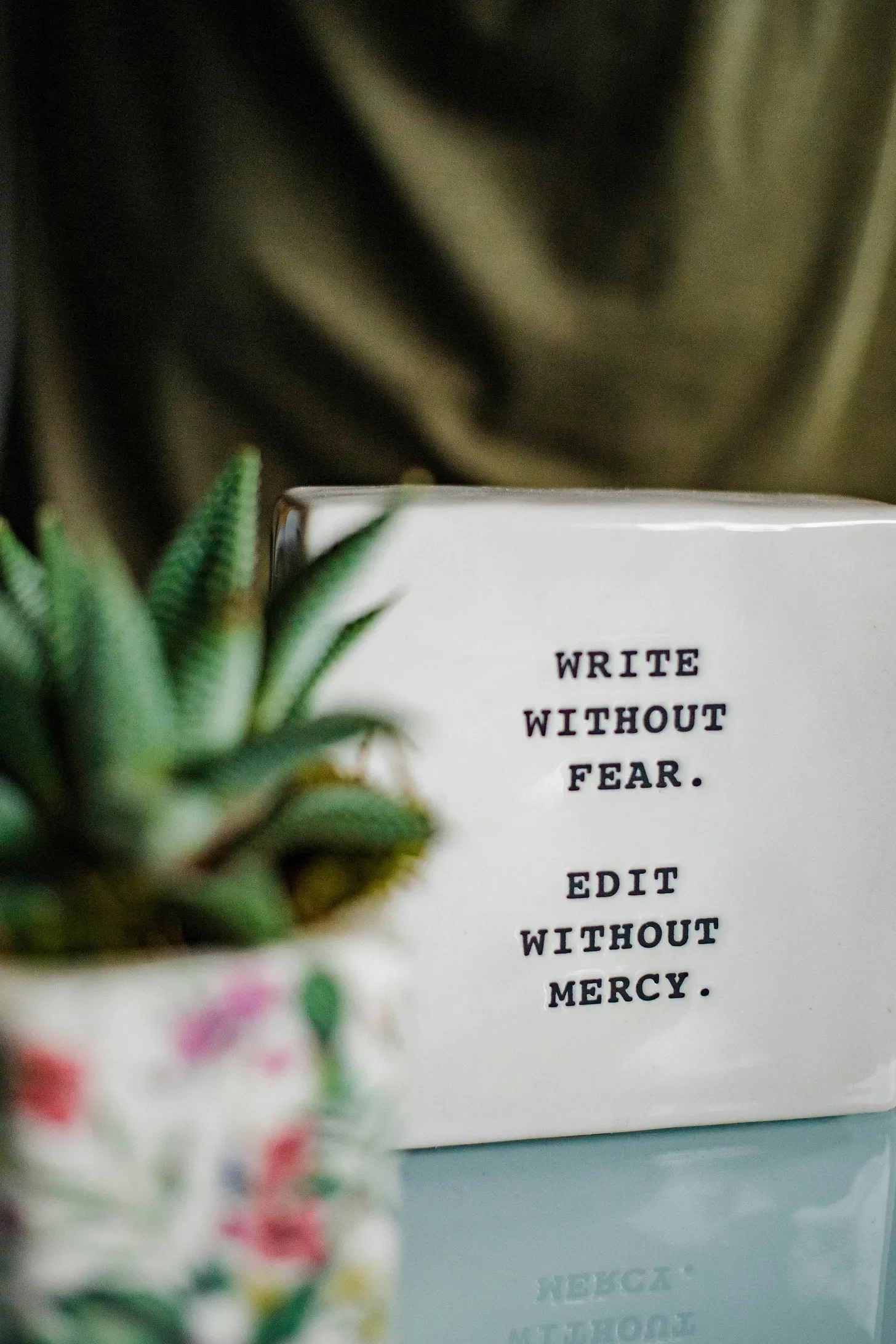How to Edit Your First Draft
...Don't read every word!
I spent part of yesterday working with the first draft of my next book The Visionary Writing Guide: Writing Rituals & Sacred Practices for Soul-Centred Creatives, and here’s what I learned.
My editing process for the very first round of editing the first draft included cutting about 30,000 words out of the draft manuscript. This has brought it down to around 70,000 words, and I intend to cut at least another 20,000 before the book is published. Most of what’s left may also be significantly rewritten.
And here’s the thing - when you are editing the first draft, don’t try to read every word. If you do, you’ll probably want to cause extreme harm to yourself, and likely decide to abandon the book altogether and never write again. Don’t do it.
Your first draft is likely to be so lengthy, messy, and just plain rubbish in places, that trying to read it through word by word will almost certainly feel depressing and discouraging. Not necessarily - it depends on how you wrote the first draft. I used to edit-as-I-go and would find that redrafting was often minimal. But recently, with my new and expanded writing process, there was a lot of incoherent mess that came out in the first draft. All of it essential to create the space and context for any good stuff that’s also there. But most of it non-essential for the actual finished book.
So, here’s how I wrestled that first draft into some kind of order:
I cut entire sections that I knew wouldn’t be useable - without re-reading any of it. Then I moved around what I had left until it felt like a shape or structure might be emerging. That’s where I’ve left it - for now. Until I’m ready to start tackling the redraft process.
Using Scrivener, I compiled all the material that I’d dropped in there for the first draft - which already had some section and chapter folders, but was very unruly.
Everything was in there. And everything was everywhere.
Photo by hannah grace on Unsplash
I compiled the full manuscript to Word, and then skimmed through whole sections to see what could easily be cut and removed. Anything that I wanted to keep or consider, I dropped into a new Scrivener file, structured around the new themes and chapters that were emerging.
Once I’d been through the entire document once, I saved it, closed it, and left it alone. I posted on social media to celebrate the achievement.
Already the book feels like it’s taking a clearer shape. The shape that has to emerge from the material, like Michelangelo sculptures would emerge from the stone in which they are carved.
Writing in this way becomes a much more collaborative process - in collaboration with the book itself - feeling what wants to emerge, what needs to be said, and what shape it must take. This is also how I write my poetry, feeling for the rhythms that guide the internal structure, creating a frequency of resonance for the poem overall.
I had a sense of what the book was about, and what chapters and sections it needed. But it’s only now that the real book is emerging - not the imaginary one I had in my head, the one that will never get written - that it is showing me what form it really wants to take.
There is still more editing, shaping, refining, and transforming to do yet. I am about to begin with the redraft. But now I have an emerging sense of what the book is becoming, I feel more confident to begin that process.
How do you work with a text that’s emerging into form?
If you are a Visionary Writer and you know you want to (need to) write, but your words are getting stuck before they get onto the page, you can subscribe to the stack for regular updates, or get the book, to find out how to break this cycle and Find Your Visionary Writing Voice.

